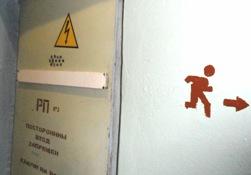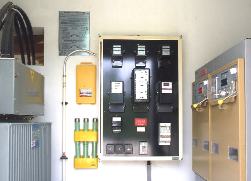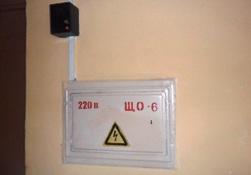Categories: Featured Articles » Novice electricians
Number of views: 118535
Comments on the article: 23
Networks up to and above 1000 volts. What are the differences?

Electric networks are usually classified according to a large number of different signs, but with regard to electrical safety they are divided mainly as follows: networks with voltage up to 1000 V and networks with voltage over 1000 V.
It is these thousand volts that appear in the certificate for electrical safety of every electrician, even if he is the chief power engineer of the enterprise or an ordinary electrician who graduated from vocational school yesterday.
And, it seems, everything is clear: low voltage - less danger, one safety requirement; high voltage is very dangerous, the requirements are stricter. But why exactly 1000 volts? Not 1500, not 660, but 1000?
And the thing is that AC networks above 1000 V are always insulated neutral networks. At the same time, networks with voltages up to 1000 V are neutral earthed networks.
 This means that the neutral of the supply transformer networks up to a thousand volts has an electrical connection to the ground. This is done so that single-phase consumers of such a network, even with an asymmetric load, receive the same power supply with a voltage equal to phase. In everyday life it is 220 V.
This means that the neutral of the supply transformer networks up to a thousand volts has an electrical connection to the ground. This is done so that single-phase consumers of such a network, even with an asymmetric load, receive the same power supply with a voltage equal to phase. In everyday life it is 220 V.
If a short circuit to ground occurs in a network with a dullly grounded neutral, then the electric current will rapidly increase and the overcurrent protection equipment will work. If there is no such protection, then all this will end very badly for the network - the conductors will quickly collapse, even melt, an electric arc will occur and, possibly, a fire will occur.
And when in the network up to 1000 volts there is a short circuit to an ungrounded case of any device, then there is a danger of electric shock for a person who touches this case. Through the human body, the current will go to the ground. Therefore, in networks with a grounded neutral, it is necessary to ground the enclosures of devices and devices, so that in the event of a breakdown to this enclosure, the current goes directly to the ground, past a path dangerous to humans.
 These are specific features regarding electrical safety when operating in networks up to 1000 V, the neutral of which is deafly grounded. In networks over 1000 V, the load is usually symmetrical, the length of the lines is large and the neutral of the transformer is isolated from the ground.
These are specific features regarding electrical safety when operating in networks up to 1000 V, the neutral of which is deafly grounded. In networks over 1000 V, the load is usually symmetrical, the length of the lines is large and the neutral of the transformer is isolated from the ground.
In this case, a short circuit to ground only slightly increases the electric current. The leakage current to the earth takes on a capacitive character, because the transformer does not have electrical connection with the ground. It turns out a capacitor (capacity) with such plates: earth - the neutral of the transformer.
But the fact that the leakage current to the earth is small does not mean that it is safe. Just the opposite. Such a current is more insidious: protection devices may not detect it at all, and if they do, they will only signal but not turn off.
If single-phase short circuits in long lines of networks above 1000 V always led to a blackout, it would be impossible to work due to the frequent and sometimes false alarms of the protection.
So, leakage currents in networks above 1000 V are a common thing. But for human life they are very dangerous. After all, even 10 milliamps, passing through our body, can cause significant harm to health. Therefore, when working on networks over 1000 V with isolated neutral, you need to be extremely careful and organized. The right to work in such networks is prescribed for each electrician in his certificate on electrical safety as a separate line.
Alexander Molokov, e.imadeself.com
P.S. About the main points of using safe voltage in everyday life, see this article.
See also at e.imadeself.com
:
